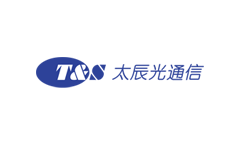Cleaning Fiber Optic Adapters is a Mandatory for Jumper Installers

As a result of the COVID-19 crisis, the telecom industry
is facing an unprecedented challenge: Today, more people than ever
before rely on high-speed Internet connections. This has led to a huge
increase in consumption.
In other words, telecom professionals need to guarantee a reliable and strong connection, which is only possible if clean connectors and end faces are used.
This
requires a solid understanding of the overall process so that it can be
performed properly. In this article, we will explain the complexity of
cleaning fiber optics and the importance of cleaning fiber connectors.
To improve network performance, it is necessary to clean fiber optic patch cords
Fiber
optic installers are well aware that the cleanliness of connector and
end faces can improve the performance of network systems. The premise is
simple: telecommunications is all about the transmission of information.
Anything that impairs data transmission should be avoided at all times.
Therefore, it is necessary to have clean systems.
Cleanliness
in telecom installation can also help you reduce the costs associated
with potential transmission outages: today's Internet connection
problems can equate to catastrophic losses.
Dirty or contaminated equipment, what's more, tends to last less than its intended life, so the risk of premature obsoleting is high. An uncleaned element can corrupt the rest of the entire connection.
Another important aspect to consider in having a clean system is that the sooner you establish the habit of cleaning your connectors early among telecommunications professionals, the less likely you are to have problems in the future as dust and debris accumulate over time. You don't feel the consequences until it's too late.
Formulate policies before cleaning Fiber Optic Adapters
Cleaning
fiber connectors and end faces should be consistent and therefore
should become a habit. As with all habits, you need to have a clear
protocol in place before you actually implement it. At the end of the
day, if you try to do something repeatedly and don't do it well, it will
do more harm than good.
Start with your surroundings. Many
people think you should only focus on the items you are going to clean.
However, you should also look at the environment in which your system is
working.
Make sure the cleaning items are clean. Direct touching of specific end faces or patchcord connectors should be done with caution. One might think that just using a cleaning cloth to cover it would be sufficient, but one might not be sure whether the cloth has actually been used for cleaning. The end face or fiber connector may already be clean, but if it comes into contact with a dirty cloth, it may cause contamination.
Avoid static electricity. Pay attention to the material and texture of the cleaning tools. Cleaning basically involves the interaction of at least two elements. This causes friction and can also lead to static electricity: one of the worst enemies of any telecommunications system.
Don't trust what looks clean out there. Dust caps that protect fiber optic sources can also collect a lot of dust. They may look clean on the outside, but the inside may be contaminated, so make sure to check to see if they need cleaning on the inside.
- +1 Like
- Add to Favorites
Recommend
- What Aspects Should Be Paid Attention to when Choosing Fiber Optic Adapters?
- How to Use Bare Fiber Adapters?
- OpDAT MV Highly Flexible Distributor Housing from METZ CONNECT is Designed for Fiber Optic and Copper Applications
- Fiber Optic Connectors Glass vs. Copper
- Knowledge about Fiber Optic Enclosures
- The Ultimate Guide to Fiber Optic Transceiver Modules
- Types of Fiber Optic Attenuators
- What Are the Components of Internet of Things?
This document is provided by Sekorm Platform for VIP exclusive service. The copyright is owned by Sekorm. Without authorization, any medias, websites or individual are not allowed to reprint. When authorizing the reprint, the link of www.sekorm.com must be indicated.





























































































































































































































































































































































































































































































































































































































































































































































































































































































